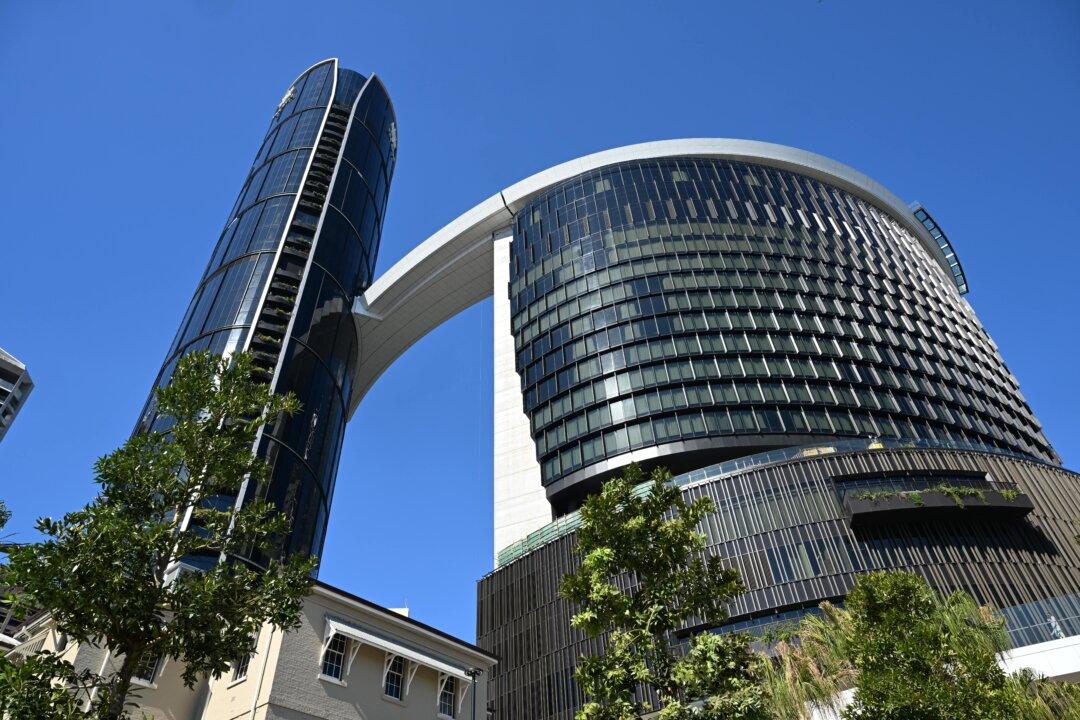Tarek Zahed received 10 gunshot wounds and witnessed his brother fatally shot outside a Sydney gymnasium months before being forcefully arrested over a separate murder.
After the May 2022 shooting of the two brothers, medical experts removed the now 43-year-old’s eyeball and inserted plates into one of his wrists and cheek and metal rods into his leg and arm.
The Comanchero national sergeant-at-arms has spent 18 months on remand after being arrested in August 2022 over the 2014 gang shooting of Youssef Assoum.
Originally accused of murder and aggravated kidnapping, these charges were dropped when Zahed pleaded guilty last month to one count of hindering the discovery of evidence.
He has admitted to wiping up the blood-soaked Volkswagen Touareg that Assoum was killed in and ordering Triantafilos Vlangos to “blow up” the vehicle by having it crushed at a wrecking yard.
Vlangos instead tried to set fire to the car with accelerant and was arrested after police spotted the vehicle ablaze in Georges Hall in Sydney’s southwest.
He pleaded guilty to one count of attempting to intentionally destroy property by fire and was sentenced to an 18-month community corrections order, expiring June 14, 2025.
Zahed faced the NSW Supreme Court for sentencing on March 1, where his barrister Ian Hill KC argued for a shorter time in prison despite his client’s violent criminal past.
He watched the hearing by video link wearing glasses and prison greens from a high-risk maximum security prison in Goulburn.
Mr. Hill said the 43-year-old had spent 18 months in solitary confinement restricted to his cell and a small exercise yard.
“He has had therefore much time to consider his future and to reconsider some of the choices that he has made in his life to date,” Justice Richard Button was told.
Mr. Hill said because Zahed had lost one eye and had cataracts in the other, he was unable to read or watch television and had been left with listening to music on a CD player given to him by prison staff.
His injuries plus post-traumatic stress disorder stemming from the Auburn shooting were not being fully treated while incarcerated, Mr. Hill said.
With an open eye socket that was weeping, Zahed was afraid of infection, the barrister argued.
Zahed was not an intelligent man and acted out of a “misguided sense of loyalty to his brother” who he suspected of being involved in Assoum’s death, the court heard.
“What we’re contending ... is a stance that takes into account all of these factors but which allows him to be released at the earliest possible opportunity,” Mr. Hill said.
Crown prosecutor Ken McKay SC drew the court’s attention to Zahed’s decades-long violent criminal past and known associations with the Comanchero outlaw motorcycle gang.
This was a “serious example” of hinder investigation because the 43-year-old was directing the activities of others as well as destroying evidence, the barrister said.
Claims he had made an effort to distance himself from the Comancheros should be viewed with suspicion, the court heard.
He will be sentenced on March 8.
His brother Abdul Kadir Zahed will face a sentence hearing on May 2 after pleading guilty to being an accessory after the fact of murder.






